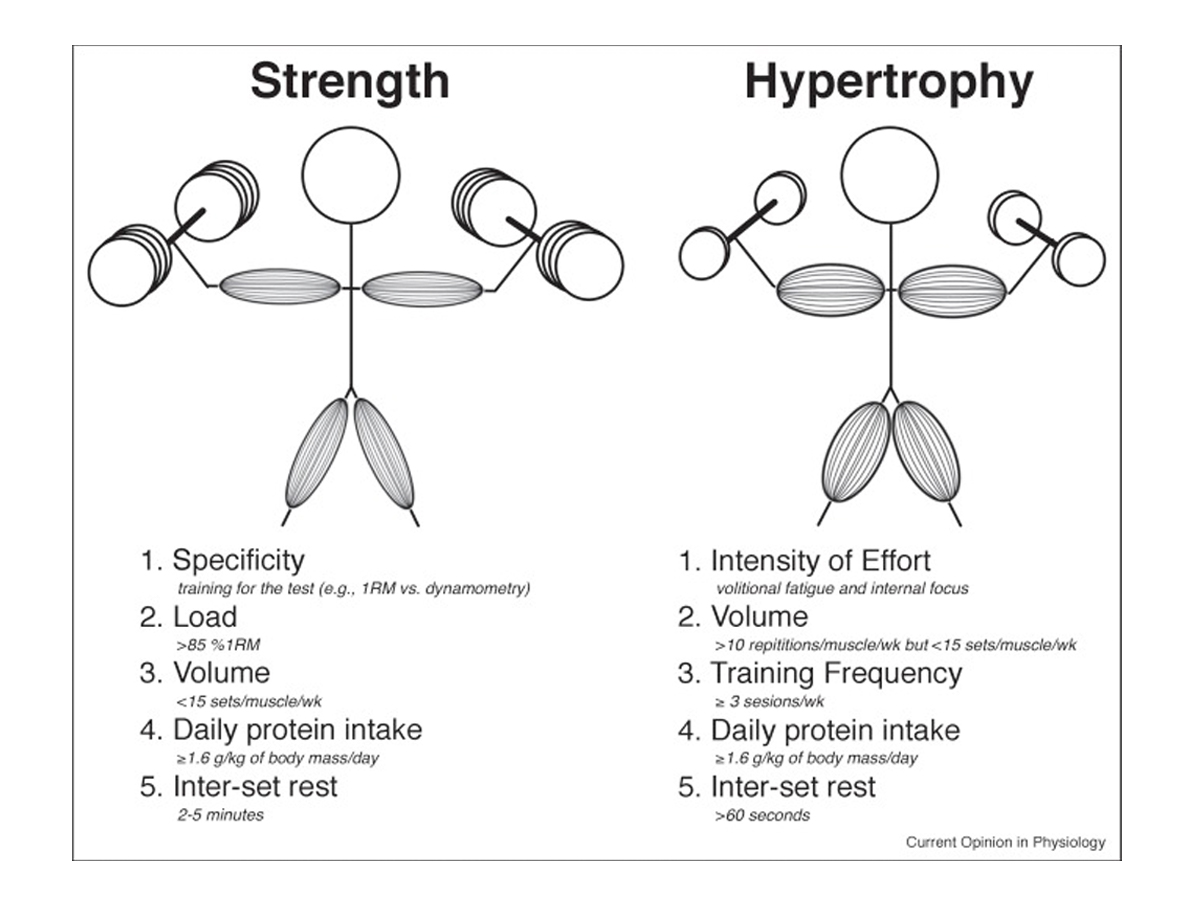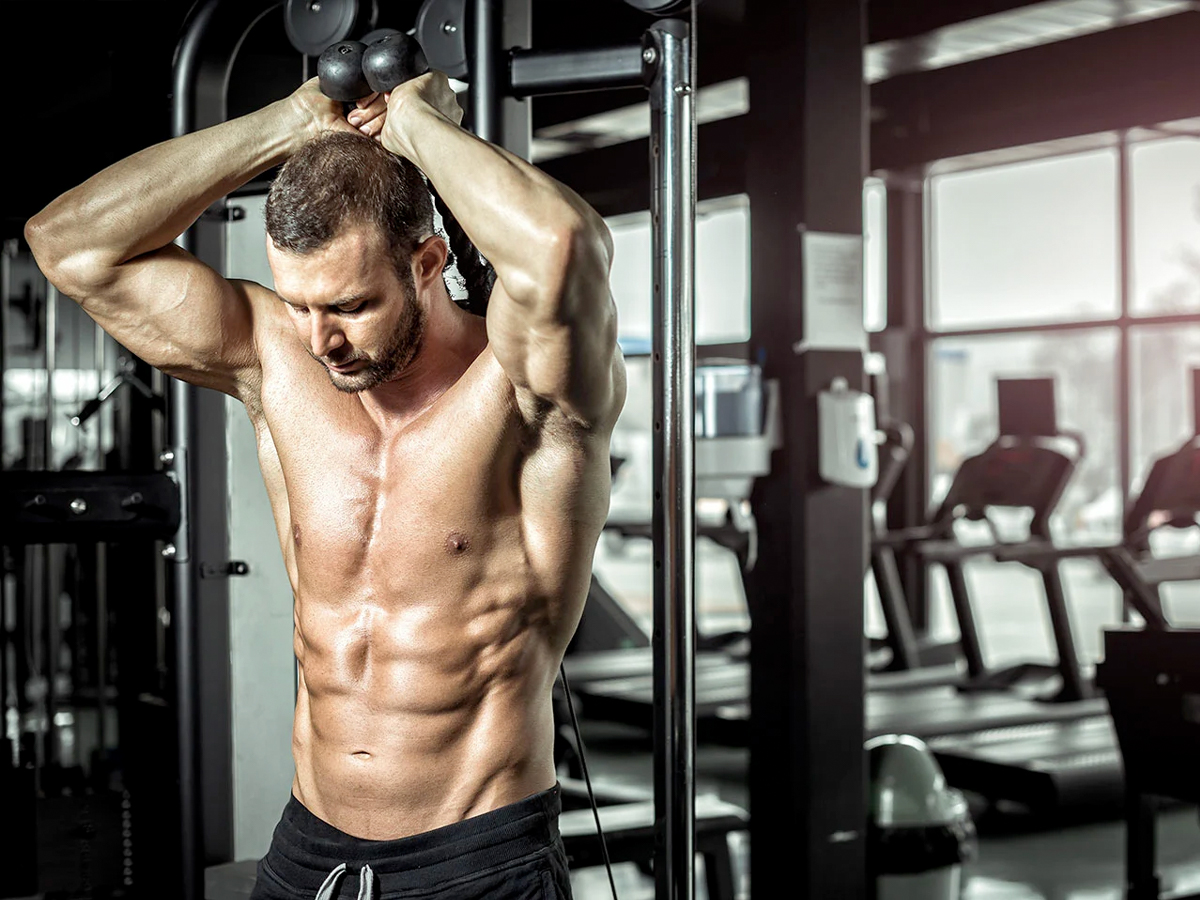
Published:
Readtime: 9 min
Every product is carefully selected by our editors and experts. If you buy from a link, we may earn a commission. Learn more. For more information on how we test products, click here.
Whether you’re a seasoned lifter or barbell novice, chances are you’ve heard the term hypertrophy before. Like a lot of fitness buzzwords and terms, hypertrophy is something that most people think they sort of, kind of, pretty well, basically know the meaning of. It’s the thing that builds muscle right? Well, rather than read you a hypertrophy definition, we thought we’d give you some examples of how it works, why it’s so important to understand, and how to train better to achieve it. So if you’re looking to pump up your weights, boost your biceps and build more muscle, hypertrophy training might be for you.

What is Hypertrophy?
Put simply, hypertrophy is the increase and growth of muscle cells through exercise. Think of exercises like lifting weights as an external force or stress on the body. Over time, your body recognises that it must adapt to this stress and, to do that, it must increase your skeletal muscle mass. As outlined in a 2019 physiology journal (2), resistance exercise training-induced muscular hypertrophy is “primarily mediated by intensity of effort”. This is achieved by performing RET to volitional fatigue and with an internal focus on contracting a muscle throughout the exercise range of motion.
Here’s an example: When you first start going to the gym, even the lightest weights will feel heavy. Over time, however, you’ll notice the weights you started with feel easier to lift. This isn’t because the weights have gotten lighter, it’s because of hypertrophy!
Cameron Falloon, joint CEO of Body Fit Training and former world-class strength and conditioning coach explains that at its core, hypertrophy training is a form of resistance training with the purpose of increasing muscle mass.
“The best way to grow your muscles is to train under volume to induce muscular fatigue. This means you should be lifting a weight that would only allow you to do 6-12 reps max without taking a break,” he says. “When you lift a really heavy weight, you achieve both mechanical damage (or tearing) and metabolic fatigue to the muscles. By allowing the muscles to tear, you force your body to have to repair that muscle, thus allowing it to grow bigger and stronger in the process.”
Types of Hypertrophy
Hypertrophy builds up your muscles by increasing the actual size of your muscle cells. The bigger they are, the more stress they can accommodate. This process occurs in two key stages, stimulation and repair. When you lift heavy weights, your muscles must generate force to overcome the resistance of the exercise. In doing this, your muscles experience structural damage to the fibres of the cells. These damaged fibres stimulate a repair response in the body. The two types of muscle hypertrophy are
- Myofibrillar: which is the growth of muscle contraction parts. This type of training will help you with speed and strength
- Sarcoplasmic: which is increased muscle glycogen storage which helps give your body more sustained energy
Once your body has identified structural damage in the muscle cells, it will activate an immune response causing inflammation. Inflammation is the natural clean up and repair process for cells and will begin to repair the torn muscle fibres. At the same time, your body initiates a hormonal response that releases cortisol and testosterone. Cortisol is a hormone that stimulates growth in cells, while testosterone increases protein synthesis. Together, these hormones help the muscle cell grow while it is being repaired. Exercise breaks down the muscle cells and hypertrophy builds them back up stronger (1).
The reason hypertrophy occurs is because your body is constantly adapting to your environment. If your environment involves lifting heavy things and physically demanding tasks, your body will build extra muscle to accommodate this. Similarly, if you live in an environment that lacks physical stress and activity, your body will get rid of unnecessary muscle to conserve its valuable energy (after all, big muscles mean that more energy is required to fuel them).

Hypertrophy vs Hyperplasia
In a very simplified sense, hypertrophy is an increase in the of muscle fibres, while hyperplasia is an increase in the number of muscle fibres. From an aesthetics standpoint, both hypertrophy and hyperplasia can result in bigger muscles. The difference, however, is that while hypertrophy increases the size of muscle cells in response to stress, hyperplasia develops new cells in response to a stimulus (3).
Muscle hyperplasia is driven predominantly by stimuli such as growth hormone or increased inflammation. When responding to the increased stimulus, the body takes satellite cells and creates new cells (in this case, muscle cells) by copying mature cells around the satellite cell. It’s important to note that you cannot choose or influence which form of response your body takes in this process, but hypertrophy has proven to be the dominant response.
What are the Benefits of Hypertrophy Training?
Hypertrophy training has a number of potentially valuable benefits to your strength, physique, and physical health (4). Here is a short list of potential benefits:
- Strength and Power Gains. Hypertrophy training will make you stronger and more powerful in your weight lifting, this is its primary objective.
- Improved Anaerobic Endurance. When you build muscle, you can sustain more power for longer and have more explosive energy readily available for use.
- Whole-body strength. The exercises you do in hypertrophy training translate to other muscle groups and fitness areas.
- Improved Joint Health. Isolation exercises can improve the health of joints, tendons and ligaments.
- Increased Caloric Expenditure. After a high volume hypertrophy workout, your body will continue to burn calories at a higher metabolic rate for up to 48 hours post-workout.
- You’ll look and feel better. Hypertrophy training builds muscle, fitness, and boosts the happy chemicals in your body.

Example Hypertrophy Workout Plan:
Growing muscle and getting stronger are like most things in life, they won’t happen overnight (sorry to break it to you). The key to hypertrophy and muscle growth is progressive overload and volume. Progressive overload is the gradual increase of one or more aspects of your strength training routine to improve your overall performance. The things you can increase are the number of sets, the amount of weight, and the frequency between sets.
To begin a progressive overload hypertrophy training routine, you must first work out your 1 rep max (1RM) for each of your lifts. This 1RM will give you a metric to work off, and you will then base your training around these numbers.
It’s important to note that exercises, reps and sets, and frequency are each a variable in your workouts. It’s important to mix them up, keep your body guessing, and try new things to stress your muscles and induce the hypertrophy response.
Exercises:
A typical and beneficial workout split for hypertrophy training is Push, Pull, Legs.
- Push Day – Includes your chest, shoulders, and tricep muscle groups. On this day, each of your movements will be a ‘push’ – think bench press, shoulder press, dips, etc.
- Pull Day – Includes your back and bicep muscle groups. On this day, each of your movements will be a ‘pull’ – think deadlift, lat pulldowns, hammer curls, etc.
- Legs – You will include your lower muscle groups. Typically exercises include squats, leg press, leg extension, hamstring extension, etc.
Reps and Sets:
Studies have suggested that increased volume does not necessarily augment RET-induced changes in muscular strength. A study by Mattocks et al (5) compared individuals that performed five 1RM tests (five repetitions) per session to a traditional RET regime (four sets of 8–12 repetitions per session) found that differences were few and far between.#references After eight weeks of RET and a significant difference in volume and volume-load, 1RM strength increased similarly between conditions.
That being said, if you are wanting to heed the hypertrophy call, the training methodology has employed a relatively uniform approach in recent years, with the golden range sitting around 6-12 reps. This range is designed to stress your muscles and create a stimulus for repair. Depending on what exercise you do, typically aim for 3-4 working sets. A working set is a set of the exercise using your desired weight. As you move up in weights, you may finish at the lower end of the rep range, but always aim for 12 reps in each set.
“Aim for 6-12 reps per set,” Falloon explains. “Make sure you are lifting heavy enough that you are almost failing by the last rep. If the weight is too light, you are training for different outcomes.”
Frequency:
Frequency is the time between sets and it plays a crucial role in the execution of hypertrophy training. As a standard, aim for a 1 minute on, 1 minute off tempo with your exercises. Limiting your time between sets to a minute or less ensures your muscles remain under stress for a greater period of time.
Rest
Perhaps the most important yet overlooked aspect of muscle hypertrophy training is rest. According to Falloon, a former AFL strength and conditioning coach and high-performance manager, recovery time, especially for this form of high-intensity training can be the difference between fatigue and success.
“It’s very important to rest for 1-2 minutes between sets, otherwise you won’t be able to produce an optimal level of force for the following sets,” he says. “While you will inevitably become weaker as the workout gos on, you want to give yourself enough rest to make sure the sets are still worthwhile for helping you achieve your goals. If you go in without rest, you won’t be able to apply as much force and therefore won’t get the same results.”
Citations
- McCall P. (2015). 10 things to know about muscle fibers.
acefitness.org/education-and-resources/professional/expert-articles/5411/10-things-to-know-about-muscle-fibers - Morton, RW, et al (2019). Training for strength and hypertrophy: an evidence-based approach
https://doi.org/10.1016/j.cophys.2019.04.006 - National Strength and Conditioning Association (2020).
https://www.nsca.com/education/articles/kinetic-select/muscle-growth/ - Schoenfeld BJ, et al. (2016). Effects of resistance training frequency on measures of muscle hypertrophy: A systematic review and meta-analysis.
link.springer.com/article/10.1007/s40279-016-0543-8 - K.T. Mattocks, S.L. Buckner, M.B. Jessee, et al. Practicing the test produces strength equivalent to higher volume training
Med Sci Sports Exerc, 49 (2017), pp. 1945-1954































Comments
We love hearing from you. or to leave a comment.